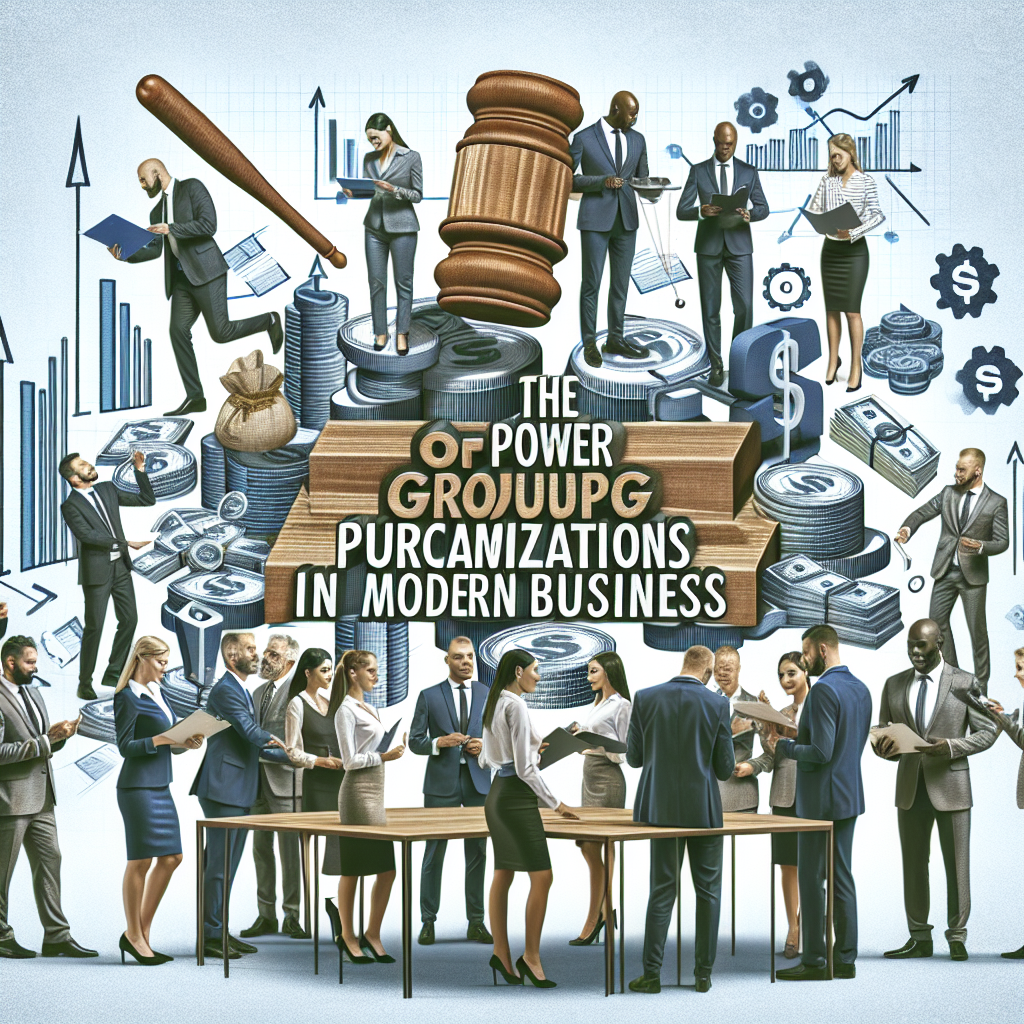Introduction
Green procurement initiatives represent a transformative approach in organizational purchasing practices. By focusing on sustainability, these initiatives aim to integrate environmental considerations into procurement processes. This shift not only promotes eco-friendly products but also encourages responsible sourcing strategies among businesses.
Key aspects of green procurement include:
- Reducing the environmental impact of products and services
- Supporting the market for sustainable goods
- Enhancing corporate social responsibility (CSR)
The integration of environmental considerations in procurement is crucial. Organizations that adopt green procurement practices contribute significantly to a greener future, aligning their operations with global sustainability goals. By prioritizing sustainable choices, you can help drive positive change within your organization and the broader community.
For instance, boosting employee morale with break room supplies that are sourced sustainably can make a significant difference. Similarly, ensuring that you provide essential PPE for airborne precautions in healthcare that meet environmental standards is another way to implement green procurement. Furthermore, staying updated with the top trends in supplier innovation can help organizations find more sustainable options in their supply chain.
Understanding Green Procurement
Definition of Green Procurement
Green procurement refers to the practice of integrating environmental considerations into purchasing decisions. This approach is vital for advancing sustainable development, as it seeks to minimize negative environmental impacts associated with products and services. By choosing suppliers and products that prioritize sustainability, organizations can contribute to a more eco-friendly market.
Key Principles of Effective Green Procurement
Several principles guide successful green procurement initiatives:
- Life Cycle Thinking: This principle encourages evaluating the environmental impacts of a product throughout its entire life cycle, from raw material extraction to disposal. Such an approach is essential in understanding the broader implications of purchasing decisions, as explored in this insightful piece on Purchasing: A Life of Learning and Transformation.
- Stakeholder Engagement: Involving various stakeholders, including suppliers, customers, and employees, fosters collaboration and transparency in procurement processes.
Primary Objectives of Green Procurement Practices
Organizations implement green procurement practices with specific objectives in mind:
- Reducing Environmental Impacts: Aim to lower greenhouse gas emissions, conserve resources, and minimize waste generated through purchasing activities.
- Supporting Eco-Friendly Products: Encouraging the development and availability of sustainable products helps shift market demand towards environmentally responsible options.
By adhering to these principles and objectives, organizations can effectively embed sustainability into their procurement strategies. This proactive stance not only aligns with global sustainability goals but also enhances their reputation as socially responsible entities.
However, achieving these goals requires more than just a commitment to sustainability; it often necessitates the use of advanced tools and strategies. For instance, exploring options such as the best procurement software can significantly streamline the procurement process. Additionally, it’s crucial to build resilience during tough times, a challenge that requires strategic planning as discussed in our article on Procurement in Crisis: Building Resilience for Tough Times.
Moreover, understanding the financial aspects of procurement roles is vital. For example, if you’re considering a career as a procurement engineer, it’s beneficial to be aware of the salary trends and insights for 2025, which can help you prepare for a promising career path.
The Role of Decarbonization Goals in Green Procurement
Decarbonization has become a crucial focus for procurement policies worldwide. The urgency to tackle climate change requires organizations to reduce their carbon footprints, especially in how they acquire goods and services. The procurement process plays a vital role in helping companies significantly lower their greenhouse gas emissions. By prioritizing low-emission products, organizations can directly support global sustainability efforts while improving their own operational efficiencies.
Notable Initiatives Promoting Decarbonization
Several initiatives are leading the way towards sustainable procurement practices:
-
Green Public Procurement Pledge: This initiative encourages public sector entities to commit to sourcing environmentally friendly products. By implementing this pledge, organizations can stimulate market demand for low-emission alternatives, thus fostering innovation among suppliers and manufacturers.
-
World Economic Forum’s First Movers’ Coalition: This coalition brings together businesses from various sectors to speed up the development and adoption of sustainable technologies. Members commit to purchasing low-carbon materials and services, creating a competitive market for these products.
These initiatives not only show a growing recognition of the importance of decarbonization but also provide frameworks for organizations looking to align their procurement strategies with environmental goals.
Practical Strategies for Incorporating Decarbonization Goals
Organizations aiming to integrate decarbonization into their green procurement frameworks can adopt several practical strategies:
-
Set Clear Targets: Define specific decarbonization goals that align with broader corporate sustainability objectives. For example, an organization could aim to reduce carbon emissions from its supply chain by 30% over five years.
-
Engage Suppliers: Foster partnerships with suppliers who prioritize sustainability. Encourage them to adopt low-emission practices and provide incentives for those that meet your organization’s environmental criteria.
-
Evaluate Product Life Cycles: Implement life cycle assessments (LCAs) when evaluating potential purchases. Understand the carbon footprint associated with each product or service from production through disposal.
-
Educate Stakeholders: Conduct training sessions for internal teams on the importance of decarbonization in procurement processes. Awareness and understanding can drive compliance and enthusiasm across departments.
-
Monitor Progress: Establish key performance indicators (KPIs) to track progress towards decarbonization goals. Regularly review these metrics to assess effectiveness and make necessary adjustments.
By incorporating these strategies, organizations can effectively integrate decarbonization goals into their procurement practices, contributing significantly toward a more sustainable future while aligning with global regulatory standards and consumer expectations. Furthermore, optimizing procurement processes can help achieve these goals more efficiently, while it’s equally important to avoid certain procurement terms that may hinder effective communication about the value of these initiatives.
Standards and Certifications Driving Credibility in Green Procurement
Harmonized standards play a crucial role in the effective implementation of green procurement practices across various industries. They provide a framework that organizations can follow to ensure their procurement processes are aligned with sustainability goals. Here are some notable standards:
- ISO 14001: Focuses on environmental management systems, helping organizations improve their environmental performance.
- ISO 20400: Provides guidance on sustainable procurement, promoting integration of sustainability into procurement processes.
However, the path to sustainable sourcing is often clouded by misconceptions. For instance, there are four common myths about purchasing groups that can hinder organizations from fully embracing green procurement practices. Understanding these myths can help businesses make more informed decisions.
Reputable certifications enhance the credibility of organizations’ sustainability claims. Two significant certifications in this space include:
-
ResponsibleSteel: This certification emphasizes responsible sourcing and production practices in the steel industry, focusing on reducing environmental impact while ensuring social responsibility.
-
Science Based Targets initiative (SBTi): SBTi encourages companies to set greenhouse gas emission reduction targets based on climate science, aligning corporate goals with global climate objectives.
Obtaining these certifications offers several advantages for businesses:
-
Alignment with Environmental Goals: Certifications like ResponsibleSteel and SBTi guide organizations in aligning their purchasing decisions with sustainable practices, ensuring that suppliers also adhere to environmentally friendly standards.
-
Enhanced Reputation: Companies demonstrating commitment to sustainability through recognized certifications can boost their brand reputation, attracting environmentally-conscious customers.
-
Market Access: Many public sector contracts require adherence to specific sustainability standards. Obtaining relevant certifications can help businesses meet these requirements and gain access to new markets.
It’s also worth noting the distinction between purchasing groups and group purchasing organizations (GPOs). Each has its own set of benefits and understanding these can further optimize your green procurement strategy.
Integrating these standards and certifications into green procurement initiatives not only fosters accountability but also drives continuous improvement within organizations. As you navigate the complex landscape of sustainable sourcing, leveraging these frameworks will strengthen your procurement strategy and contribute to long-term success.
Leveraging Regulatory Frameworks for Successful Green Procurement Initiatives
Government policies play a crucial role in shaping the landscape of green procurement. Various regulatory frameworks have emerged globally to facilitate the adoption of sustainable procurement practices across different levels of governance. These frameworks are designed to encourage organizations to integrate environmental considerations into their sourcing strategies.
Key Global Regulatory Frameworks
- European Union’s Green Public Procurement: This initiative encourages member states to incorporate environmental criteria into public contracts, fostering the market for eco-friendly products.
- United Nations Sustainable Development Goals (SDGs): The SDGs provide a comprehensive framework guiding nations towards sustainability, influencing procurement policies worldwide.
U.S. Federal Sustainability Plan
The U.S. Federal Sustainability Plan stands out as a significant policy aimed at achieving net-zero emissions by 2050. This plan outlines specific targets and objectives that federal agencies must meet, creating a supportive environment for sustainable sourcing strategies. Key features include:
- Reduction Targets: Agencies are mandated to reduce greenhouse gas emissions and increase energy efficiency in operations and procurement processes.
- Sustainable Purchasing Guidelines: The plan provides detailed guidelines for incorporating sustainability into purchasing decisions, ensuring that organizations prioritize environmentally responsible products.
Moreover, this policy also opens up avenues for nonprofits to maximize federal grant funding, which can be utilized for implementing green procurement initiatives.
By establishing clear benchmarks and expectations, the U.S. Federal Sustainability Plan motivates organizations to rethink their procurement practices and invest in sustainable solutions.
Buy Clean California Act
California’s Buy Clean California Act serves as an exemplary model for promoting low-carbon construction materials through public sector contracts. The Act mandates state agencies to consider the lifecycle greenhouse gas emissions of certain materials when awarding contracts. Major aspects include:
- Transparency in Emissions Data: Contractors must disclose greenhouse gas emissions associated with their products, allowing agencies to make informed decisions based on environmental impact.
- Promotion of Local Economies: By prioritizing low-carbon materials from local suppliers, the Act not only supports sustainability goals but also boosts regional economies.
The impact of this legislation is significant. It encourages manufacturers to innovate by developing low-emission alternatives and positions California as a leader in sustainable procurement practices.
Regulatory frameworks like the U.S. Federal Sustainability Plan and California’s Buy Clean California Act illustrate how government policies can drive green procurement initiatives. By leveraging these frameworks, organizations can align their sourcing strategies with environmental goals, enhancing their credibility while contributing to a more sustainable future.
Corporate Social Responsibility (CSR) Considerations in Green Procurement
Integrating green procurement into your organization’s Corporate Social Responsibility (CSR) strategies can significantly enhance brand reputation and align with evolving consumer expectations. With increasing awareness of environmental issues, consumers actively seek out companies that exhibit sustainable practices. Leveraging green procurement not only addresses these demands but also positions your brand as a responsible leader in the market.
Key Benefits of Green Procurement in CSR Strategies
1. Enhanced Brand Reputation
- Companies that adopt sustainable purchasing practices demonstrate their commitment to environmental stewardship.
- This proactive stance can differentiate your brand in a crowded marketplace, fostering customer loyalty and trust.
2. Meeting Consumer Expectations
- Consumers are increasingly prioritizing sustainability when making purchasing decisions.
- Implementing green procurement practices allows organizations to resonate with these values, driving sales and customer engagement.
Mitigating Risks Through Sustainable Purchasing
Sustainable purchasing practices play a vital role in mitigating risks associated with supply chain disruptions caused by:
- Climate Change: Extreme weather events can impact supply chains, leading to delays and increased costs. By sourcing from environmentally responsible suppliers, you can create a more resilient supply chain capable of adapting to unforeseen circumstances.
- Resource Scarcity: The depletion of natural resources poses a significant threat to businesses relying on traditional sourcing methods. Embracing green procurement enables organizations to prioritize renewable materials and suppliers that focus on sustainable practices, reducing dependence on scarce resources.
The integration of green procurement into CSR strategies not only aligns business objectives with environmental goals but also serves as a safeguard against external threats. By fostering an eco-friendly image and ensuring resource sustainability, companies can thrive while contributing positively to the planet’s health.
Moreover, for those looking to delve deeper into the world of procurement, entry-level procurement jobs offer a great opportunity to kickstart your career in the supply chain sector while promoting sustainable practices.
Implementation Strategies for Effective Green Procurement Initiatives
Implementing effective green procurement initiatives requires a structured approach centered on stakeholder education, supplier collaboration, and the integration of Key Performance Indicators (KPIs).
Educating Internal Stakeholders
Educating internal stakeholders is essential for fostering buy-in and support throughout the organization. Consider the following strategies:
- Workshops and Training Sessions: Organize regular workshops to inform employees about the benefits of green procurement. This creates awareness of sustainable practices and their impact on organizational objectives.
- Internal Communications: Utilize newsletters, bulletins, or intranet posts to share success stories related to green procurement efforts. Highlighting case studies can reinforce the significance of these initiatives.
- Engagement through Leadership: Encourage leaders within the organization to champion green procurement efforts. Their endorsement can significantly enhance employee commitment.
Engaging Suppliers in Collaborative Partnerships
Collaboration with suppliers is critical for driving innovation and delivering environmentally preferable solutions. Implement these strategies:
- Supplier Assessment: Evaluate potential suppliers not just on price but also on their environmental practices. This assessment can promote accountability and encourage suppliers to adopt greener practices.
- Joint Development Initiatives: Work with suppliers to develop eco-friendly products or services tailored to your organization’s needs. This partnership can lead to innovative solutions that benefit both parties.
- Feedback Mechanisms: Establish feedback loops where both your organization and suppliers can share insights on sustainability efforts. This encourages continuous improvement and strengthens relationships.
To further enhance supplier collaboration, consider adopting some effective sourcing strategies which not only drive innovation but also ensure quality and reliability in supplier performance.
Integrating Environmental Criteria into Specifications
Integrating relevant environmental criteria into product and service specifications is vital for achieving sustainability targets. Follow these steps:
- Define Environmental Standards: Clearly outline the environmental criteria required for products or services in your procurement specifications. This sets expectations for suppliers and guides purchasing decisions.
- Utilize KPIs: Establish robust monitoring mechanisms using Key Performance Indicators (KPIs) to track progress towards sustainability targets over time. Examples of KPIs may include:
- Reduction in carbon emissions associated with purchased goods
- Percentage of eco-friendly products sourced
- Supplier compliance with environmental standards
By focusing on these key areas—stakeholder education, supplier collaboration, and KPI integration—organizations can effectively implement green procurement initiatives that align with their sustainability goals and contribute positively to the environment. Additionally, leveraging private sector group purchasing benefits can further strengthen these initiatives by maximizing purchasing power while ensuring adherence to sustainable practices.
Challenges Organizations Face When Implementing Green Procurement Initiatives And How To Overcome Them
Implementing green procurement initiatives often presents several challenges for organizations. Key obstacles include:
Managing Greenhouse Gas Emissions
- Data Availability Issues: Many organizations struggle with obtaining accurate data related to greenhouse gas emissions within their supply chains. Inconsistent reporting methods and a lack of standardized data collection techniques exacerbate the problem.
- Measurement Methodologies: Establishing reliable measurement methodologies is crucial for assessing emissions accurately. Without effective tools, organizations may find it difficult to track progress towards sustainability goals.
Compliance Challenges
- Evolving Standards and Regulations: Rapid changes in environmental standards at both national and international levels can lead to compliance-related hurdles. Organizations may face difficulties staying current with new regulations, risking non-compliance.
- Resource Allocation: Allocating resources to keep up with compliance requirements can strain organizational budgets and human resources.
Practical Recommendations
To navigate these challenges effectively, consider the following strategies:
- Invest in Data Management Tools: Utilize software solutions that facilitate better data collection and reporting on greenhouse gas emissions. This technology can streamline tracking processes and improve accuracy.
- Engage Third-Party Auditors: Collaborate with third-party auditors who specialize in environmental compliance. Their expertise can provide valuable insights into current regulations and help identify areas for improvement.
- Develop Internal Training Programs: Educate employees about evolving environmental standards and how they impact procurement practices. This knowledge fosters a culture of compliance throughout the organization.
- Establish Partnerships with Suppliers: Work closely with suppliers to improve transparency in emissions reporting. Share best practices for reducing emissions, ensuring that everyone in the supply chain is aligned toward common sustainability goals.
- Monitor Regulatory Changes: Stay informed about changes in regulations by subscribing to industry newsletters or joining relevant associations. This proactive approach ensures that your organization remains compliant amidst evolving requirements.
Overcoming these challenges requires a concerted effort from all stakeholders involved in the procurement process. By addressing greenhouse gas emissions management and compliance challenges head-on, organizations can enhance their green procurement initiatives while contributing positively to environmental sustainability efforts.
Benefits Beyond Compliance: The Business Case For Adopting Green Procurement Practices
Adopting green procurement practices can yield significant financial and strategic advantages for organizations. Key benefits include:
1. Cost Savings
Implementing sustainable sourcing strategies often leads to long-term cost reductions. For instance, resource efficiency measures can minimize waste generation and lower operational expenses. Companies that invest in eco-friendly products may also benefit from reduced energy consumption, directly impacting their bottom line. You might find it interesting how to maximize cost savings in your daily life through such practices.
2. Brand Enhancement
Committing to green procurement strengthens corporate reputation. Consumers are increasingly favoring brands that demonstrate environmental responsibility. This shift in consumer behavior can translate into increased market share for businesses prioritizing sustainability in their operations. Positive brand perception fosters customer loyalty and attracts new clients who value eco-conscious practices.
3. Innovation
Embracing green procurement opens avenues for innovation. Organizations often find themselves re-evaluating their supply chains and seeking out new technologies or processes that align with sustainability goals. This proactive approach not only enhances operational efficiency but also positions companies as leaders in the market, capable of responding to emerging trends and consumer demands.
In the context of public sector clients, such as those serviced by Hubzone Depot LLC, the integration of green procurement is particularly beneficial. As a certified HUBZone small business and Women’s Business Enterprise (WBE), Hubzone Depot leverages its commitment to sustainability to attract contracts while providing best-in-class service integrity. By focusing on transparency and community commitment, they deliver significant savings to U.S. organizations through strategic solutions that prioritize eco-friendly options.
However, it’s important to note that investing in green procurement is not merely a compliance measure; it serves as a catalyst for broader organizational growth, driving both financial performance and enhanced brand equity in an increasingly competitive marketplace. Additionally, organizations should consider exploring the benefits of compliance-driven sourcing, which can further enhance reputation, reduce risks, and align with ethical standards.
For those operating with limited resources, adopting strategic solutions for cost efficiency can be invaluable. These strategies can optimize processes and leverage networks for business success.
Lastly, if you’re managing a one-person procurement function, Hubzone Depot’s strategic solutions can help streamline your operations for better supplier management and cost efficiency.
Case Study: Hubzone Depot LLC’s Approach To Balancing HUBZone Compliance With Sustainability Goals Through Strategic Supplier Selection And Management
Hubzone Depot LLC serves as a prime example of how an organization can integrate social equity with green procurement initiatives. This certified HUBZone small business and Women’s Business Enterprise (WBE) not only prioritizes diverse suppliers but also adheres to regulatory requirements.
Commitment to Social Equity and Environmental Stewardship
The mission statement of Hubzone Depot reflects its dedication to both economic empowerment and environmental sustainability. By focusing on:
- Diverse Supplier Prioritization: The company collaborates with vendors through a Group Purchasing Organization (GPO), ensuring that small and diverse businesses are included in its supply chain. This commitment is part of their broader strategy of understanding diversity, equity, and inclusion in the workplace.
- Sustainability Goals: Their procurement strategy emphasizes sourcing eco-friendly products and services, aligning with broader green procurement initiatives.
Lessons from Public Sector Client Engagement
Hubzone Depot has garnered valuable insights while working with public sector clients who prioritize sustainable practices. Key lessons learned include:
- Balancing Price Competitiveness and Sustainability: Clients often seek the best value without compromising on environmental standards. Hubzone Depot demonstrates that it is possible to achieve both through strategic supplier management.
- Regulatory Compliance: Adhering to HUBZone compliance is crucial for accessing public contracts. Hubzone Depot maintains its certifications through diligent processes, ensuring transparency and accountability.
Driving Positive Change Through Responsible Sourcing
The experience of Hubzone Depot underlines the significance of leveraging purchasing power in public sector contracting. Organizations can drive positive change at scale by embracing responsible sourcing approaches that align with long-term sustainability goals. For instance, they have harnessed the power of leveraging drastic cost reduction through collective spend which not only reduces costs but also promotes sustainability.
Call to Action: Public sector entities should explore opportunities to integrate green procurement initiatives into their purchasing strategies. By doing so, they not only fulfill regulatory obligations but also contribute to a greener economy while uplifting diverse suppliers.
In summary, organizations like Hubzone Depot showcase how combining HUBZone compliance with sustainability efforts can lead to meaningful impacts in both social equity and environmental stewardship. Their approach exemplifies the potential for strategic supplier selection, such as strategic sourcing vs category management, to foster a more sustainable future while meeting regulatory standards.





